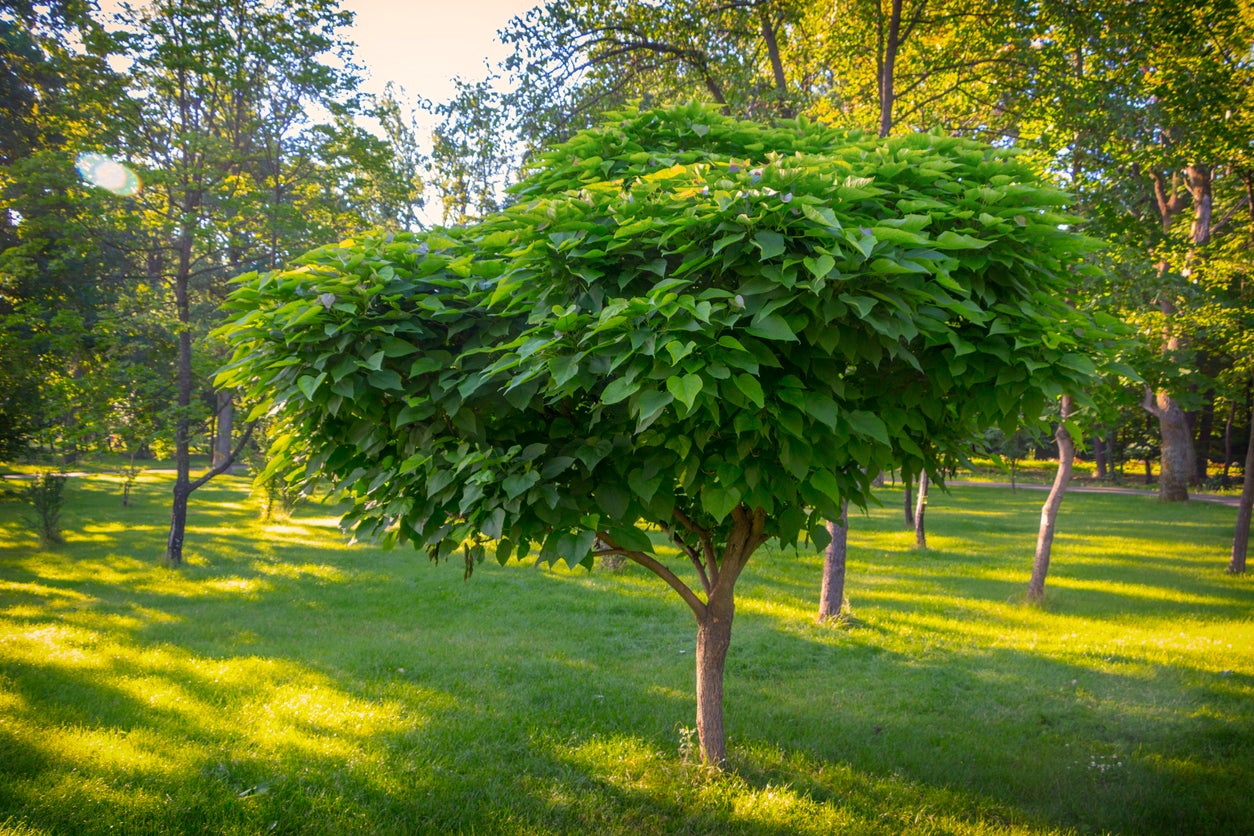Catalpa Tree Planting: How To Grow A Catalpa Tree


Across the midwest United States, you may find a bright green tree with lacy panicles of creamy white flowers. The catalpa is native to parts of North America and frequently grows in hot dry soils. What is a catalpa tree? It is a softly rounded tree with lovely flowers and interesting pod-like fruit. The plant has an interesting use for fishermen and is an important tree for land reclamation. Try growing a catalpa tree in your yard and admire the attractive leaves and showy spring showers of white flowers.
What is a Catalpa Tree?
Catalpa trees are 40 to 70 feet (12 to 21.5 m.) tall trees with arching canopies and an average lifespan of 60 years. The deciduous plants are hardy to USDA planting zones 4 to 8 and can tolerate moist soils but are more suited to dry areas. The tree's leaves are arrow-shaped and glossy bright green. In fall they turn a bright yellow-green before dropping as cold temperatures and chilly winds arrive. Flowers appear in spring and last into early summer. The fruit is a long bean-shaped pod, 8 to 20 inches (20.5 to 51 cm.) long. The tree is useful as a shade tree, along streets and in dry, hard-to-plant sites. However, the pods can become a litter problem.
How to Grow a Catalpa Tree
Catalpa trees are quite adaptable to different soil conditions. They perform well in both full sun to partial shade locations. Growing catalpa trees is easy but they have the tendency to naturalize in areas where the tree isn't native. This potentially invasive potential is more common in border states around the plant's natural range. Trees may start from dropped seed but this is easily avoided by raking up the dropped seed pods. The tree is regularly planted to attract catalpa worms, which fishermen freeze and use to attract fish. The ease of catalpa tree care and its rapid growth make it ideal for areas where a quickly maturing tree line is desired.
Catalpa Tree Planting
Choose a bright sunny location for growing Catalpa trees. Ideally, the soil should be moist and rich, although the plant can tolerate dry and inhospitable sites. Dig a hole twice as deep and twice as wide as the root ball. Fluff out the roots to the edges of the hole and fill in around them with well worked soil. Use a stake on young trees to ensure straight growth. Water the plant well and every week until it has established. Once the tree has rooted, water is only needed in periods of extreme drought.
Catalpa Tree Care
Young trees should be pruned to encourage good growth. Prune in spring one year after planting. Remove suckers and train the tree to a straight leader trunk. Once the tree is mature, it is necessary to prune it to keep low growing branches from impeding maintenance under the plant. These are tough trees and don't require much babying. Fertilize in spring with a balanced fertilizer to promote health. Watch for insects and other pests, and avoid overhead watering which can cause mildew and fungal problems.
Gardening tips, videos, info and more delivered right to your inbox!
Sign up for the Gardening Know How newsletter today and receive a free copy of our e-book "How to Grow Delicious Tomatoes".

Bonnie Grant is a professional landscaper with a Certification in Urban Gardening. She has been gardening and writing for 15 years. A former professional chef, she has a passion for edible landscaping.
-
 4 Superfast Composting Methods: Turn Waste Into Garden Gold In 30 Days Or Less
4 Superfast Composting Methods: Turn Waste Into Garden Gold In 30 Days Or LessTry the fastest composting methods to turbocharge your pile and transform kitchen scraps and garden waste into finished compost in just a few weeks.
By Mary Ellen Ellis
-
 Best Spider Plant Soil – Complete Soil Guide And Expert Tips For Keeping Plants Happy
Best Spider Plant Soil – Complete Soil Guide And Expert Tips For Keeping Plants HappySpider plants are fun and easy plants to grow, but what is the best soil for a spider plant? Selecting the right soil is important so they can thrive.
By Bonnie L. Grant
